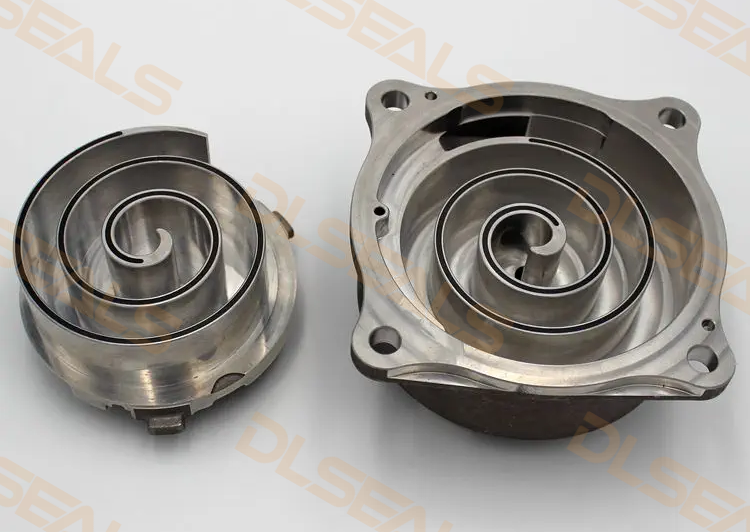Ⅰ. Core Functions
- Blocking Internal Leakage
- Seals micro-axial gaps between orbiting and fixed scroll wraps, preventing backflow of high-pressure gas to low-pressure chambers.
- Reduces volumetric efficiency loss by 5%-15%, directly improving COP/EER.
Ⅱ. Structural Design & Materials
| Parameter | Specification |
|---|---|
| Shape | Rectangular or dovetail-groove strips embedded in scroll grooves (0.1-0.5mm protrusion) |
| Primary Material | Reinforced PTFE: - Matrix: PTFE (μ=0.05-0.15) - Fillers: Glass fiber (anti-creep), Carbon fiber (wear resistance), MoS₂ (self-lubrication) |
| Harsh Service Alternative | PEEK composites (continuous service @ >250℃) |
Ⅲ. Self-Adaptive Sealing Principle
- Initial Preload: 0.1mm minimum protrusion provides baseline sealing force.
- Pressure-Activated Sealing: Gas pressure dynamically forces scrolls axially toward strips (sealing force ∝ system pressure).
Ⅳ. Key Performance Requirements
- Wear Resistance: Service life >100,000 hrs @ linear speed >2m/s.
- Anti-Cold Flow: Withstands plastic deformation under >20MPa pressure.
Ⅴ. Failure Modes & Maintenance
| Failure Cause | Solution |
|---|---|
| Material Degradation | Validate compatibility with R32/R410A & POE oil |
| Abrasive Wear | Control system cleanliness (filter ≤30μm) |
Ⅵ. Impact on Compressor Performance
- 5-15% efficiency gain via leakage reduction.
- >5dB noise reduction by eliminating gas blow-by.
Post time: Aug-18-2025

